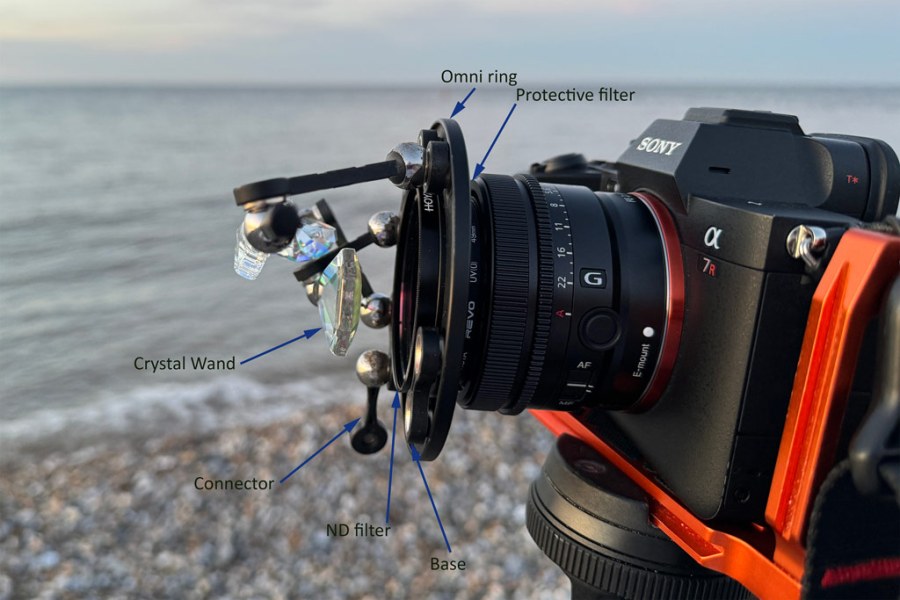I’ve been using the Lensbaby Omni System for a couple of years now. I’ve used it in many ways, but I’m especially drawn to the effects when I use it for seascapes.
My favourite images are based on what could be a nice minimalist composition with a focal point of interest and plenty of space for adding the Omni effects. Examples here include rocks exposed by the receding tide in Devon, Herne Bay pier, and one of the Anthony Gormley statues on Crosby Beach.
I’m a photographer, artist and Lensbaby Ambassador based in the UK. I like to take photos of the natural world. Very often these are manipulated to give a different view to what the eye sees and most of this manipulation is done in-camera using Lensbaby products to alter the way that light hits the camera sensor. See more at www.paulawilks.com

Making the most of the light
As with all photography, the quality and direction of the light make a big difference to the final image. My favourite is to shoot into the post-sunset glow. Bright, direct sunlight causes problems. It bounces off and around the crystals and causes blown out highlights. A combination of sun and clouds can work nicely if you time your shots for when the sun is behind the cloud, the sunset image at Crosby Beach us an example of this. You can also sometimes find a patch of shade to shield the crystals if you want to shoot when the sun is bright, I used this technique for the Herne Bay pier shot.
The Lensbaby Omni System
The Lensbaby Omni system is made up of a ring that attaches to the lens via the filter thread, magnetic bases and connectors that attach to the ring and wands that attach to the connectors. There is a wide variety, including crystals, prisms, coloured films, reflectors and more, all with different effects. There are three wands I use most often for seascapes – the two crystals in the Colour Expansion pack (wedge and teardrop) and the sceptre crystal from the Rainbow expansion pack.
The system can be used on any lens with a filter thread from 49 to 77mm (82mm at a push). I haven’t had success using wide-angle lenses because I can’t get the depth of field shallow enough, but I have used focal lengths from 40-400mm successfully. I like using small lenses if I’m handholding the camera since I can hold the camera with one hand whilst adjusting the wands with the other. To protect the front of your lens from the wands use a UV protection filter.
Many of my seascapes are long exposures, so I also use ND filters and a tripod. Screw-in filters can be attached directly to the Omni ring.
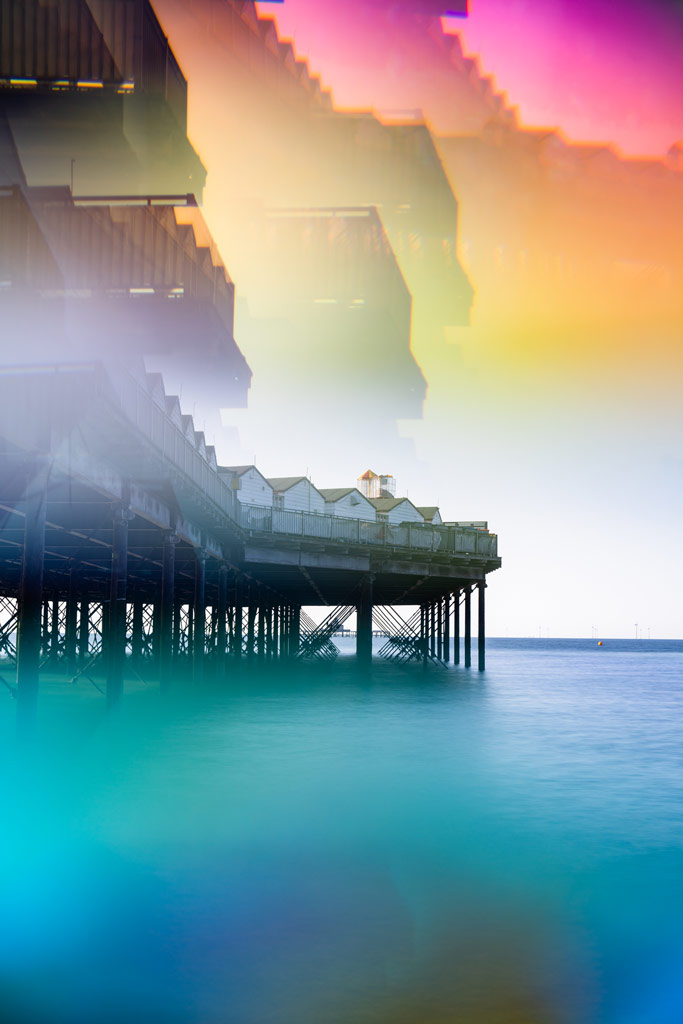
Camera Settings
It is important to get the depth of field right – it needs to be shallow enough that you don’t see the shape of the wands, but if it’s too shallow then you can blur out the effect completely and just get an all over haze. Aperture is key. I shoot full frame and use lenses with focal lengths of 40mm and greater. For focal lengths in the region of 40-50mm I will start at f/4. For longer focal lengths, such as 100-200mm, I’ll start at f/8 and will stop down to f/16 on the occasions I am using anything longer. I try apertures around these f-stops to see what works for a given set of conditions.
I use aperture priority mode and set the aperture first. I then adjust the ISO to give me the shutter speed I want. This is often a long exposure and with the aperture quite open I usually find that I am setting a low ISO. As the light fades into blue hour, I’ll up the ISO and/or remove the ND filter.
Depending on the scale and position of the effect, you may find that your camera’s autofocus struggles so be prepared to switch to manual focus if necessary.
How to Use the Omni Wands
The million-dollar question is ‘How do you position the wands to achieve the effects?’ – the answer is that there is a lot of trial and error. I start by taking a shot with no wands to check the composition. Then I add a single wand and adjust it until I get an effect I like. I’ll then add another to ‘fill in’ another part of the image trying different positions and angles. Most of my favourite images have 2-3 wands. If things stop working, then I’ll take all the wands off and start again – patience is key.
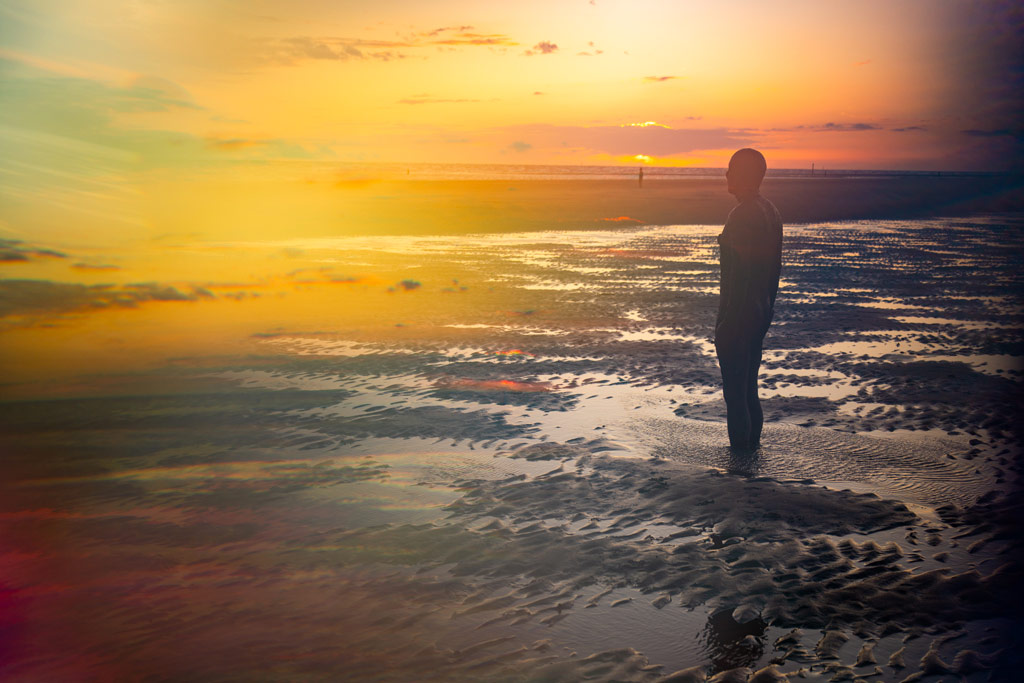
Post-processing
My images are all edited to a greater or lesser extent. Because I’m not trying to create a natural-looking image I can go further with editing than I otherwise might. Dehaze is useful to bring out the colours, I often pull the curve higher in the mid-tones and adjust the white balance or colour mix. If there’s a part of the image that the effect hasn’t reached, or a rogue bright spot then I’ll use Photoshop to clone and heal.
Kit List
UV / Protective Filter
The wands are placed very close to the front of the lens. It is easy to scratch or take a chip out of the lens even if you are being careful – a protective filter reduces the risk of expensive damage.
Lensbaby Omni Filter Ring
These come in two sizes – small for lenses from 49-58mm filter thread, and large for lenses from 62-82mm filter thread. Step-up/down rings and a filter wrench are supplied with each. The magnetic bases and connectors are also included with the ring.
Lensbaby Omni Wands
There are many different wands available, but my favourites for the seascapes are the melon wedge and teardrop wands from the Colour expansion pack and the sceptre wand from the Rainbow expansion pack.
ND Filters / Tripod
Many of my seascapes are long exposures and I use ND filters to allow this, with the camera mounted on a tripod. Screw-in filters at 58mm for the small ring and 77mm for the large ring work well.
Walkthrough
Setting up the Camera

First thing to fit to the lens is a protective filter. Next is the Omni ring, using a step-up ring if necessary. Then for the seascapes I nearly always use an ND filter – this can be screwed onto the centre of the Omni ring. Finally, one or more of the Omni wands.
Composition
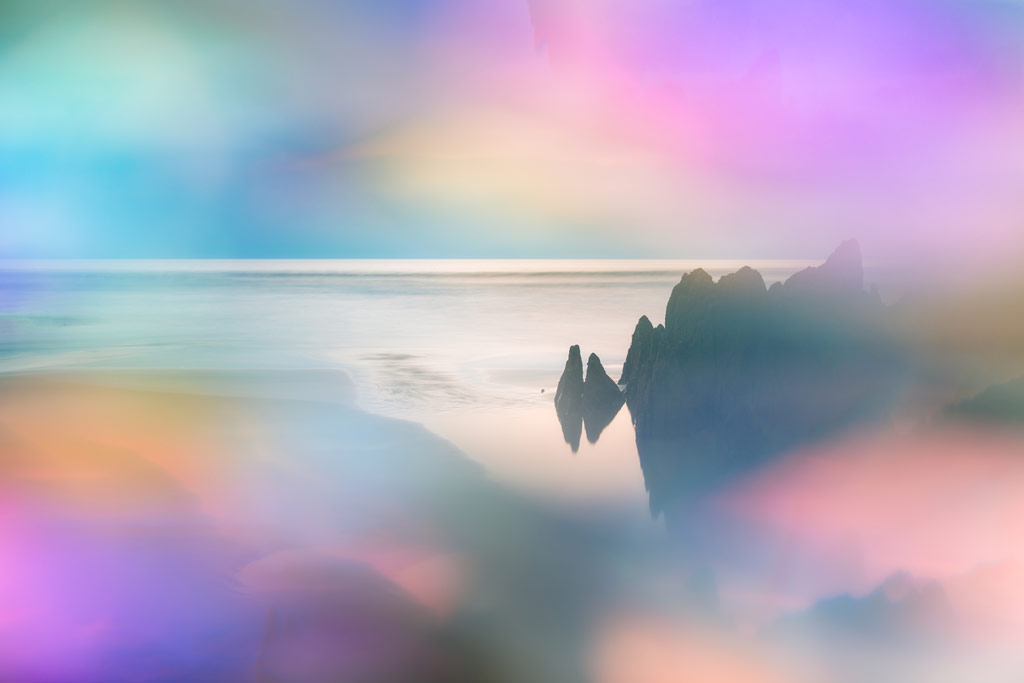
I like to find a composition that has a strong subject with plenty of space around it where the Omni effects can be added. I’m looking for a good, minimalist composition and have found that rock formations, piers, and the Anthony Gormley statues at Another Place have all made good subjects.
Depth of Field
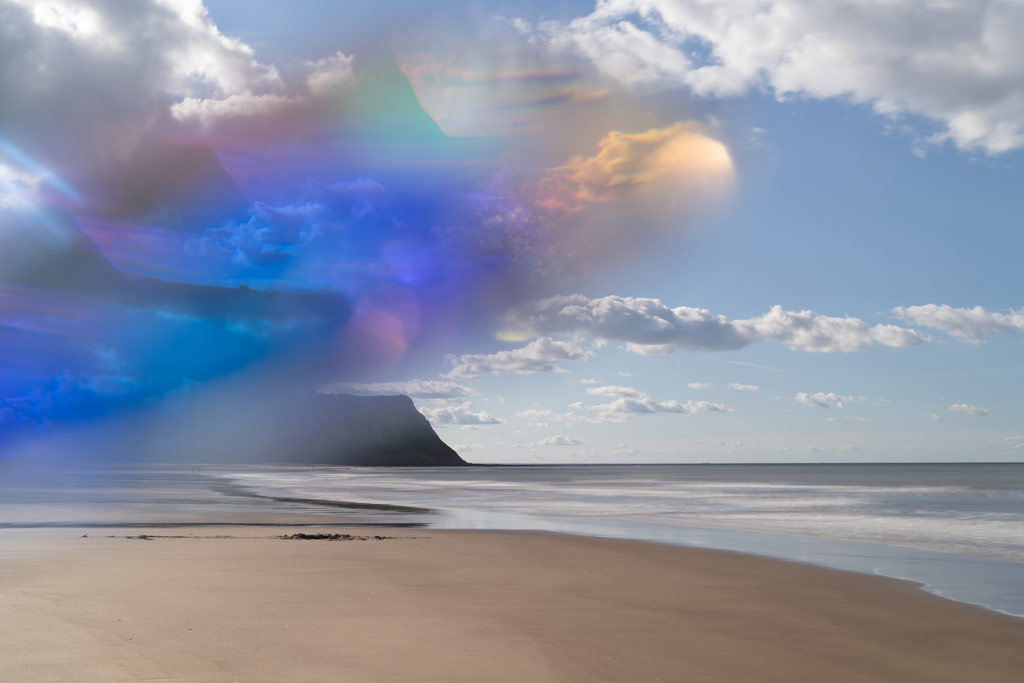
Getting the depth of field right is key – not shallow enough and you will see the shape of the wand in the shot (as in the picture above), too shallow and the effects will just become a diffuse haze. Adjust the aperture until you get this balance right.
Getting the light right
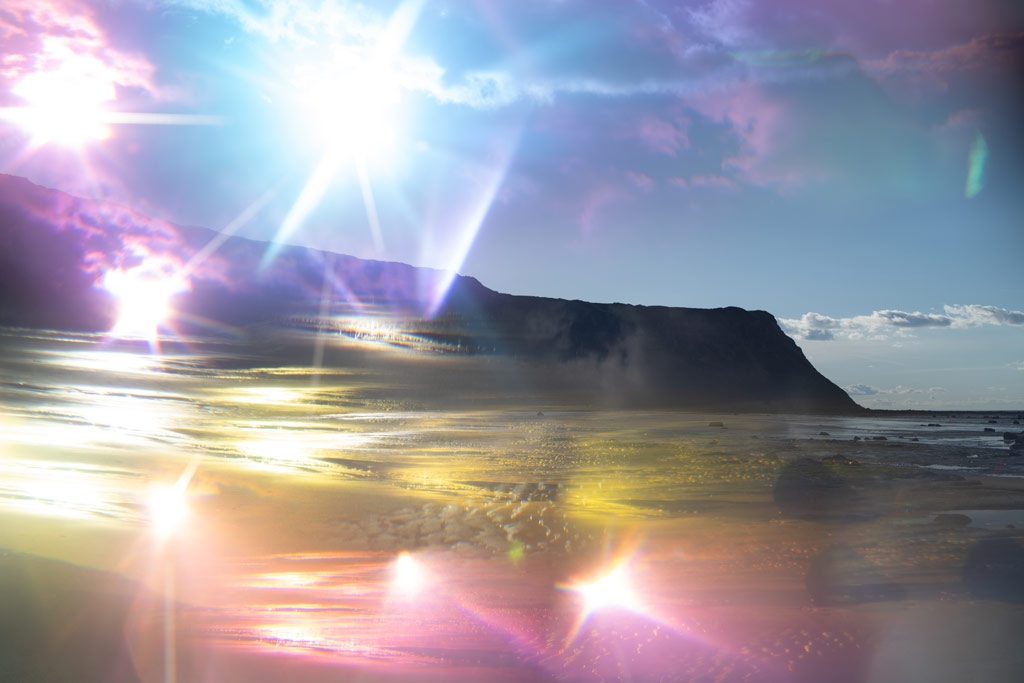
Some light is necessary to get the effects, but too much bright light and you will find it bounced around by the crystals so that you get multiple patches of burnt out highlights such as in the image above. I favour post-sunset light, or sun filtered by clouds.
Post-processing

Since you have already moved away from a ‘natural’ look, you can push the sliders a bit further than you would normally. Dehaze can be useful to bring out the colours, and trying different white balances can really change the look. The image shows before and after editing.
Related reading:
- Lensbaby Sweet 22 Review – A wide view with dramatic blur
- Lensbaby Double Glass II review
- Lensbaby’s new Velvet lens aims to produce pleasing classic-look portaits
Follow AP on Facebook, Twitter, Instagram, YouTube and TikTok.

